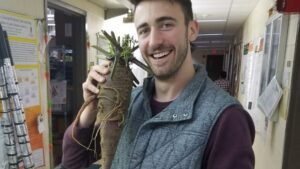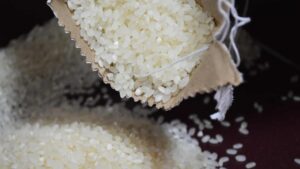Check out what’s happening in the global seed industry,from a new quality assurance scheme for seed treatment in Europe to the discovery of wild soybeans linked to salt tolerance in China.
STATUSChina
A team of researchers from The Chinese University of Hong Kong, BGI and other institutes have identified a gene of wild soybean linked to salt tolerance, with implication for improving this important crop to grow in saline soil. Published online in Nature Communications, this study provides an effective strategy to unveil novel genomic information for crop improvement.
Soybeans are an important crop for the world. Due to domestication and human selection, cultivated soybeans have less genetic diversities than their wild counterparts. Among the lost genes, some might play important roles for the adaptation to different environments. In this study, scientists used wild soybean as a resource for investigating the valuable genes that adapt to certain environmental conditions.
They sequenced and assembled a draft genome of wild soybean W05, and developed a recombinant inbred population for genotyping-by-sequencing and phenotypic analyses to identify multiple QTLs relevant to traits of interest in agriculture. Using the de novo sequencing data from this work and their previous germplasm re-sequencing data, the team discovered a novel ion transporter gene, GmCHX1, and suggested it might be related with salt tolerance.
During the following rapid gain-of-function tests, the GmCHX1 gene was conferred its function on salt tolerance, and suggested GmCHX1 acted probably through lowering the Na+/K+ ratio. The authors assumed that the elimination of GmCHX1 in salt-sensitive germplasms might be an example of negative selection against a stress tolerance gene in unstressed environments. The expression of stress tolerance genes may be an energy burden on the plant if the functions of these genes are not required.
Through this study, researchers developed an efficient strategy using the combination of whole-genome de novo sequencing, high-density-marker QTL mapping by re-sequencing and functional analyses, which could enhance the efficiency of uncovering QTLs and genes for beneficial traits in crop breeding. — Source BGI
“The effort and leadership grain farmers have demonstrated on this issue has been second to none, and to have this discounted with such a rash move and announcement through media, is frankly insulting,”
STATUSAustralia
The University of Queensland and Meat and Livestock Australia have developed a new psyllid-resistant Leucaena variety and are now seeking interest from potential licensees. Leucaena is a tree legume that produces very high quality forage for cattle.
The new high-quality variety has excellent psyllid resistance, high forage yield and good branching structure for grazing. This new variety will overcome the significant impacts of psyllids currently experienced by existing Leucaena varieties, and permit high productivity Leucaena-based pastures in higher rainfall regions. The new variety is currently undergoing DUS trials for PBR registration.
Ideally, any partner will be able to demonstrate suitable seed production, marketing and distribution capacity in Australia. For more information and a technical package please contact Amanda McAlpine at amcalpine@mla.com.au.
STATUSCanada
Officials from the Province of Ontario are considering a ban on neonicotinoids, which have been blamed for the decreasing number of pollinators. The province wants to “move away from widespread, indiscriminate use of neonicotinoid-based pesticides,” says Jeff Leal, Ontario Agriculture minister. “Over the coming months, I want to first consult with industry, farmers and environmental stakeholders on options that are practical, including the consideration of a license system.”
Leal says he is committed to finding a balanced approach, based in science, that addresses the important role pollinators and growers play in the province’s food industry. However, there is conflicting evidence. A study done by a researcher at the University of Guelph shows that bees exposed to neonicotinoids become worse at pollinating as they become more familiar with their environment — the opposite of what should happen. Yet another field study by a different researcher from the University of Guelph found no link between insecticidal seed treatments and bee health.
So what’s a government to do when there is conflicting credible evidence that supports two different positions? The minister doesn’t have the authority to ban neonicotinoids, but he can ban the sale of this class of pesticides in Ontario.
CropLife Canada acknowledges that its important to reduce the exposure of bees to seed treatment dust and farmers are encouraged to follow best management practices to help protect pollinators. To help further reduce dust emissions, this year the Pest Management Regulatory Agency mandated farmers use Bayer CropScience’s Fluency Agent when planting treated seed.
Meanwhile, the National Farmers Union sent Health Canada a letter asking the Minister of Health, the Minister of Agriculture and the Minister of the Environment and to act in the public interest by invoking a precautionary principle and implement a five-year moratorium on the use of neonicotinoid-treated seed in field crops.
On the other hand, Grain Farmers of Ontario, representing the province’s 28,000 corn, soybean and wheat farmers, released a statement that expresses disappointment in the government’s direction. “The effort and leadership grain farmers have demonstrated on this issue has been second to none, and to have this discounted with such a rash move and announcement through media, is frankly insulting,” says Henry Van Ankum, chair of the Grain Farmers of Ontario. “Farmers across the countryside have modified their equipment, are participating in field trials, are using the new mandatory fluency agent, which has proven successful and have forged good, open communications with many beekeepers.”
This is an evolving issue around the world and European Seed will continue to follow it. — Julie Deering
STATUSPAKISTAN
During a two-day annual Wheat Productivity Enhancement Project (WPEP) planning meeting held in Islamabad, the United States Department of Agriculture (USDA), wheat researchers from across Pakistan, the International Maize and Wheat Improvement Center (CIMMYT) and the International Center for Agricultural Research in the Dry Areas (ICARDA) focused on reviewing the progress of the past wheat growing season and developing a plan for breeding, disease surveillance, seed production, and agronomy research for the upcoming rabi season.
“The WPEP project has produced exceptional results. Wheat is an important crop in both Pakistan and the U.S. and our two countries are continuing a 50-year tradition of collaboration in agriculture,” said U.S. Embassy Agricultural Counselor David Williams.
Williams noted that farmers in every province grow wheat and this important crop accounts for 60 per cent of the daily caloric intake of the average Pakistani. He further explained that the U.S.–Pakistan collaboration is vital to the global effort to combat UG 99 and other wheat diseases.
The meeting participants agreed that making UG 99 wheat fungal disease-resistant varieties available to farmers is a critical step in maintaining high yields for Pakistan’s most important crop. The combined efforts of U.S. and Pakistani scientists have resulted in the successful testing and release of two highly productive wheat varieties that are capable of surviving the destructive UG 99 wheat fungal disease. WPEP and Pakistani partners introduced and tested two new wheat varieties, NARC 2011 and PAK-13. These new varieties not only provide disease protection but also produce higher yields than existing varieties. UG 99 is already present in neighbouring countries and threatens to devastate Pakistan’s wheat crop if resistant varieties are not developed and deployed.
The U.S. Government-funded WPEP supports Pakistani and international scientists in evaluation and development sectors, and releases new high-yielding, disease-resistant wheat varieties. Other objectives include improving agronomic practices and upgrading Pakistan’s research capacity.
U.S. and Pakistani scientists expressed satisfaction over the progress of WPEP so far. — Source Pakistan Today
STATUSTHAILAND
Six organisations have joined hands to promote the production of high-quality rice seeds. The collaborating agencies include the Rice Department, the Bank for Agriculture and Agricultural Cooperatives, the Thai Rice Foundation under Royal Patronage, the National Science Technology and Innovation Policy Office, the Agricultural Research Development Agency and the National Science and Technology Development Agency (NSTDA).
The shortage of high-quality seed is one of the major problems faced by rice farmers and others in the sector in Thailand, as it directly affects the production and quality of rice grains entering the domestic and world markets.
Only 40 per cent of rice-seed demand is met, leading to production problems such as low yield and inconsistent and low-quality rice grains.
The root causes of problems in rice-seed production are many: access to elite lines and master seeds; a lack of seed-production knowledge among farmers; a shortage of inspectors to certify high-quality seed; a disconnection between producers and distributors; and weak financial structure to support the production/distribution chain.
The six organisations will, therefore, work together to address these problems based on the strength and expertise of each body.
Thaweesak Koanantakool, president of the NSTDA, said the overall objective of the collaboration is to develop the network of rice-seed producers and distributors; upgrade the system of production and certification of high-quality seed; and meet the Kingdom’s rice-seed demand.
The activities to be undertaken will comprise the launch of a training programme in seed production and boosting human capital in the field of seed certification; raising awareness among farmers of the importance of quality seeds; and access to financial resources for farmers and business operators in the value chain.
With this collaboration, rice production in Thailand can be advanced, generating significant income for farmers as well as increasing the competitiveness of the rice industry in the global market, he said.












